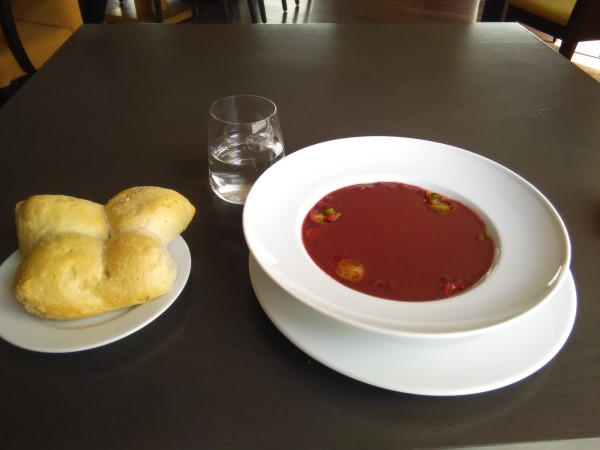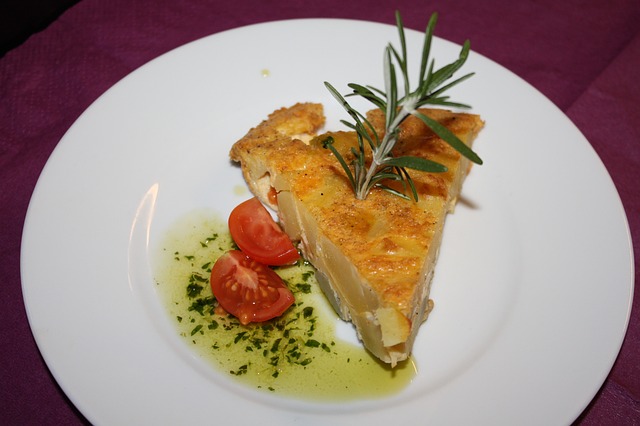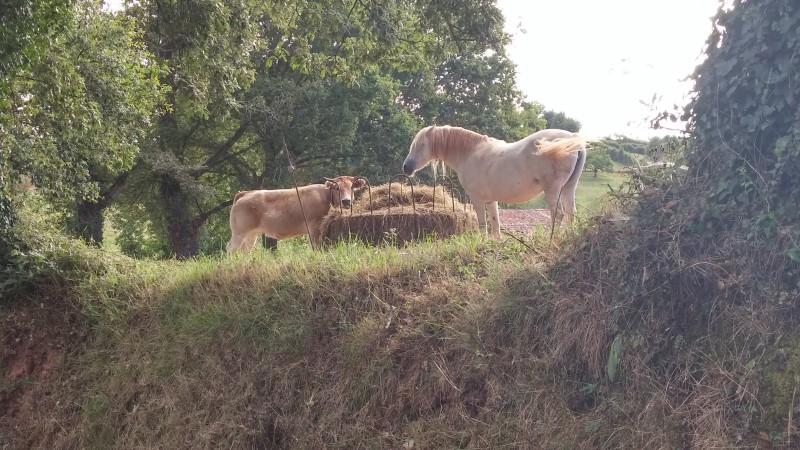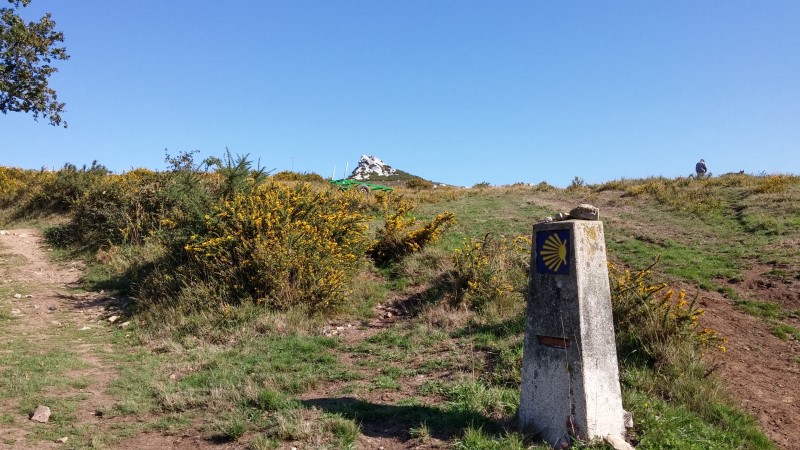If you’ve never been to Spain, you may have heard a couple of myths about Spanish food. For example that it is healthy (far from truth), or that they eat mostly fish and vegetables (even further from the truth). Regardless of what you’ve heard, however, you should realize two things:
- Spanish is a vast country, and dietary habits differ from one province to another.
- Food you can get on the Camino (the pilgrim menu) isn’t necessarily the food locals eat.
Back to the main point though: Can you eat gluten free on the Camino? The quick answer is YES, you can. But as it is always the case when it comes to any special diet in Spain, you need to know where to go, what to ask for, and what to avoid. And that’s exactly what we will discuss on the following lines.
Table of Contents
Bread is the local staple food–they eat it with everything
Each province of Spain has their typical cuisine with few legendary dishes, but they all have one thing in common–bread (full of gluten) is served with absolutely everything. And by everything I mean everything. Imagine eating potatoes or rice with bread. Sounds weird? Well, that’s exactly what they do in Spain :). In every restaurant, often before you even make an order, a plate or small basket with sliced bread (in 95% it is white bread) is served on the table. Not the best start to your gluten free diet. But it doesn’t end there.
Pasta is also popular in Spain, making its way to many “primeros” (starters), but also many “secundos” (main courses). Again, you can forget about gluten-free pasta, such as one made from maize, or other gluten-free plant. And then comes a desert, typically a cake, which, as you can guess, includes gluten… This may all sound super discouraging, but believe me, you can eat gluten free on the Camino, you just need to know where to go and what to ask for. We’ll look into it right now.

– “Gazpacho de cerezas” (or “cherry gazpacho”), an Andalusian specialty (gluten free) I ate while walking Via de la Plata, in an expensive restaurant in Merida. Notice the big bread on the side. Regardless of the dish and the price range of the place, you’ll always get bread in Spanish restaurants.
Spanish tortilla–a great gluten free food you can get in most bars and restaurants in Spain
Remember the two words: Spanish tortilla, or just “tortilla”. It can be your lifesaver for a gluten free diet all around Spain. You can check the recipe here, but it is basically just potatoes, eggs, onion, and salt. Some better places may add zucchini, especially in the season, which makes the dish even more tasty (and better balances with some fiber added to the mix).
Now, in normal circumstances you shouldn’t probably eat such a dish daily. It has a lot of calories and the eggs add plenty of cholesterol to the mix. But Camino isn’t your typical day. You walk a lot, burn a lot of calories, and hence you can definitely offer eating tortilla even every day. Many pilgrims on vegetarian or gluten free diet fall in love with the dish and eat it all the way to Santiago! It is something like Nepali Dal Bhat in the Himalayas–if you’ve been there you will know :). The best thing about tortilla is that they serve it almost everywhere. Of course we are in Spain so it comes with bread, but you do not have to eat the bread, or you can ask for a gluten-free bread (pan sin gluten). In more expensive places they typically store some.


– Spanish tortilla served as a “tapa” in one of the bars along the Camino. Normally you can order a “tapa” (a small slice), a “racion” (a bigger slice, almost always sufficient for me), or “la mitad”, half of the entire circle, which is big and often sufficient for two people.
You will find plenty of gluten free options in Spanish supermarkets
Eating your own stuff on a bench in a park (or in a city center) isn’t exactly the thing locals would do in Spain, but as a pilgrim you probably do not care (at least in my opinion you should not care :)). The good news is that you can find many gluten free options, including ready-to-eat dishes, in Spanish supermarkets and grocery stores. They have packed gluten-free bread everywhere, so you can take it and have it with a delicious gazpacho (sold in every supermarket), or with hummus (sold in most supermarket chains), or with anything else you find fitting. Eat one of big ripe Spanish tomatoes with it, or a lettuce, and you have eaten better (health-wise and taste-wise) than 95% of pilgrims on any day on the Camino!
If you are used to the culture of “bio shops” in your country, that means special small (or even big) shops that store and sell high quality bio production (either only plant-based or including animal products), I will disappoint you though. Such shops do exist only in bigger Spanish cities (you won’t pass many on your way to Santiago), and they aren’t well-stocked to my liking anyway. They are also heavily overpriced to tell the truth :). My advice is to shop around a bit, in local “fruterias” (shops that sell primarily fruits and vegetables but often also some items for people with special diet) and in local grocery stores, creating your own pilgrim menu along the way.
Don’t rely on gluten-free options in pilgrim hostels
One of the things I like a lot about Camino de Santiago are the communal dinners in albergues (pilgrim hostels). The people running the place (often volunteers) prepare the dinner, and pilgrims share food and stories while eating and drinking together. What I have observed lately is that most places are ready to accommodate vegetarians (it is just important to say so while you register), and some places will even serve vegan food. However, gluten-free isn’t a buzzword on the Camino, and not something people running albergues count with.
Having said that, a communal dinner can be anything. A creamy vegetable soup with a bread and a big salad, meat and potatoes, pasta, paella, and so on, and so forth. Some of these dishes are actually gluten-free, but it is a bit of a hit and miss. My advice is the following: Have some gluten free food stocked with you, so if you can eat joust one course (or none) during the communal dinner, you won’t end up going to bed hungry.


– A communal dinner in one of the albergues. I am not on the picture since I am taking the picture. Communal dinner is a fantastic occasion to connect with other pilgrims, but whether you’ll get something gluten-free is a really a hit and miss…
Tarta de Santiago – A surprisingly gluten free desert of the Camino
Who wouldn’t like a sweet treat once in a while, especially when walking fifteen to thirty kilometers each day? I have good news for you. There is one gluten free cake that you can have as a desert in many places along the Camino, and it even carries the name of the Saint you follow on your pilgrimage–St. James, or “Santiago” in Spanish. Tarta de Santiago (you can check a recipe here) is naturally gluten free, containing only eggs, sugar, almond flour, lemon zest and cinnamon.
Again it isn’t the healthiest cake in the world, and you’d do your body more good by eating a delicious locally produced orange, but you can afford to “sin” a little bit on your pilgrimage, considering how many miles you walk every day. Tarta de Santiago is actually also a great souvenir, or something you can bring home to your loved ones, so they can also have a bite of Spain back home…. You can buy it packed in a nicely decorated box in dozens of shops in Santiago de Compostela.
Final thoughts on eating gluten free on the Camino
As you can see now, the fact that you are on a gluten-free diet should not discourage you from doing the Camino. Sure, you won’t eat with the locals, and you may have to refuse an invitation for a pilgrims menu. But you can always buy great gluten-free stuff in the supermarkets, ask for tortilla in restaurants, and enjoy Santiago’s cake with coffee in bars and coffee shops along the way!
On the top of that, you can carry on you half a kilo of almonds or dried fruits, just in case you feel like having a snack and there’s no gluten free option available. Special diets always require some sacrifices, but in my experience they are well-worth it. I’ve been a vegetarian for seven years, eating primarily plant-based food, and low in gluten. Yet I managed to enjoy all of my caminos walked during the last seven years, and I will no doubt enjoy those to come… Hope you will too!
Matej
May also interest you:


![Ultralight Packing List for Camino de Santiago [2024 Edition]](https://caminolovers.com/wp-content/uploads/2022/03/altra-shoes-640-x-480.jpg)


